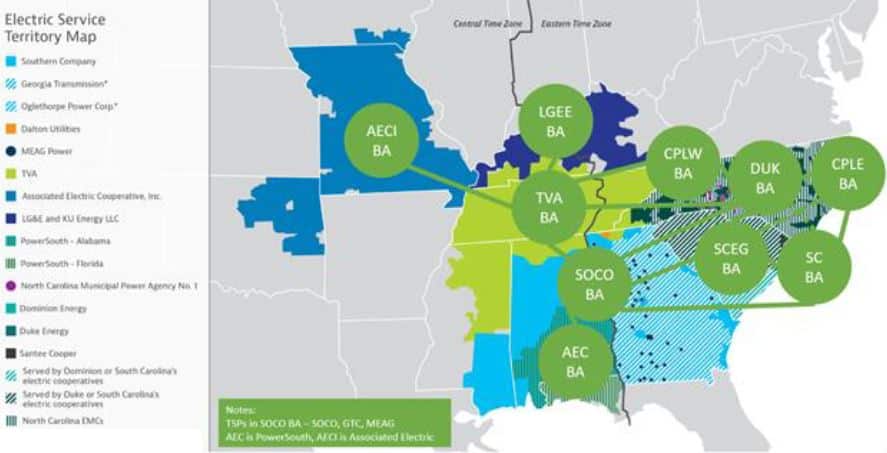Many Southeast utilities have proposed a construct called the Southeast Energy Exchange Market (SEEM). We’ve argued before that SEEM is not a market at all, despite the word market appearing in its name. The benefits of the proposed Southeast Energy Exchange Market (SEEM) are joke-level small compared to the savings customers could see with a Southeast Regional Transmission Organization (RTO).
The Federal Energy Regulatory Commission, FERC, laid out detailed questions and concerns with the SEEM proposal in a deficiency letter earlier this year. It provided utilities an opportunity to improve the SEEM proposal to be a stepping stone toward a real market with real customer benefits and a level playing field for clean energy. I really wish the utilities had taken advantage of this opportunity. Instead, their response to FERC’s deficiency letter was to double down on a bad proposal and make tiny adjustments around the edges.

SEEM Utilities Response to FERC
In a filing to respond to FERC’s deficiency letter, the SEEM utilities answered most of FERC’s questions, dodged a few, and made very small changes in the transparency of SEEM to try to address FERC’s concerns about market oversight, the potential for market manipulation or the use of market power. Basically, the utilities proposed that they submit more information directly to FERC since SEEM doesn’t have a market monitor. I’m not sure how FERC will feel about this, but my sense is that FERC has better things to do than serve as SEEM’s market monitor.
SACE’s Response to a Response
On June 28, 2021, SACE along with other public interest organizations filed a response to the SEEM utilities’ response to the deficiency letter. Here are some highlights of the main issues that still exist in the SEEM proposal.
- SEEM proposal is still discriminatory and not open to all participants
- Concerns about the ability of utilities to use SEEM to exert market power and market manipulation persist
- Marginal improvements in transparency from the utilities’ response do not mitigate concerns about the ability of utilities to exert market power
- SEEM governance structure still doesn’t provide due process to participants
- SEEM’s transmission product would still increase the transmission costs to non-participants
Other Responses
A coalition of clean energy industry associations also submitted a response to the utilities’ response. These comments also point out the lack of transparency of the SEEM proposal even after the small changes made in response to FERC’s deficiency letter.
Among other suggestions, the comments also suggest that FERC could establish a joint hearing as described under section 209 of the Federal Power Act. Basically, this would be a hearing with state regulators (and potentially other regulators like TVA Board members) to “develop additional record evidence regarding the SEEM proposal, its potential impacts on just and reasonable rates and the provision of non-discriminatory transmission service.” This would help fill a gap in state oversight of utilities’ crafting of and decision to join SEEM.
SEEM is a distraction
We remain convinced that SEEM is being used by large Southeast utilities as a distraction from real market reform. They are worried their capture of some state legislatures and regulators has eroded, that market reforms are on the horizon, and that SEEM will delay or derail these reforms. By putting “market” in the name, then proposing a clear non-market construct, SEEM is clear misdirection.
Lawmakers are becoming wise to the fact that the utility regulatory model that was constructed to operate in the 1950s may not be the best suited for today’s electric sector transformation. We’re not falling for this magician’s trick.
Read all of our blog posts on SEEM.
#SoutheastEnergyExchangeMarket